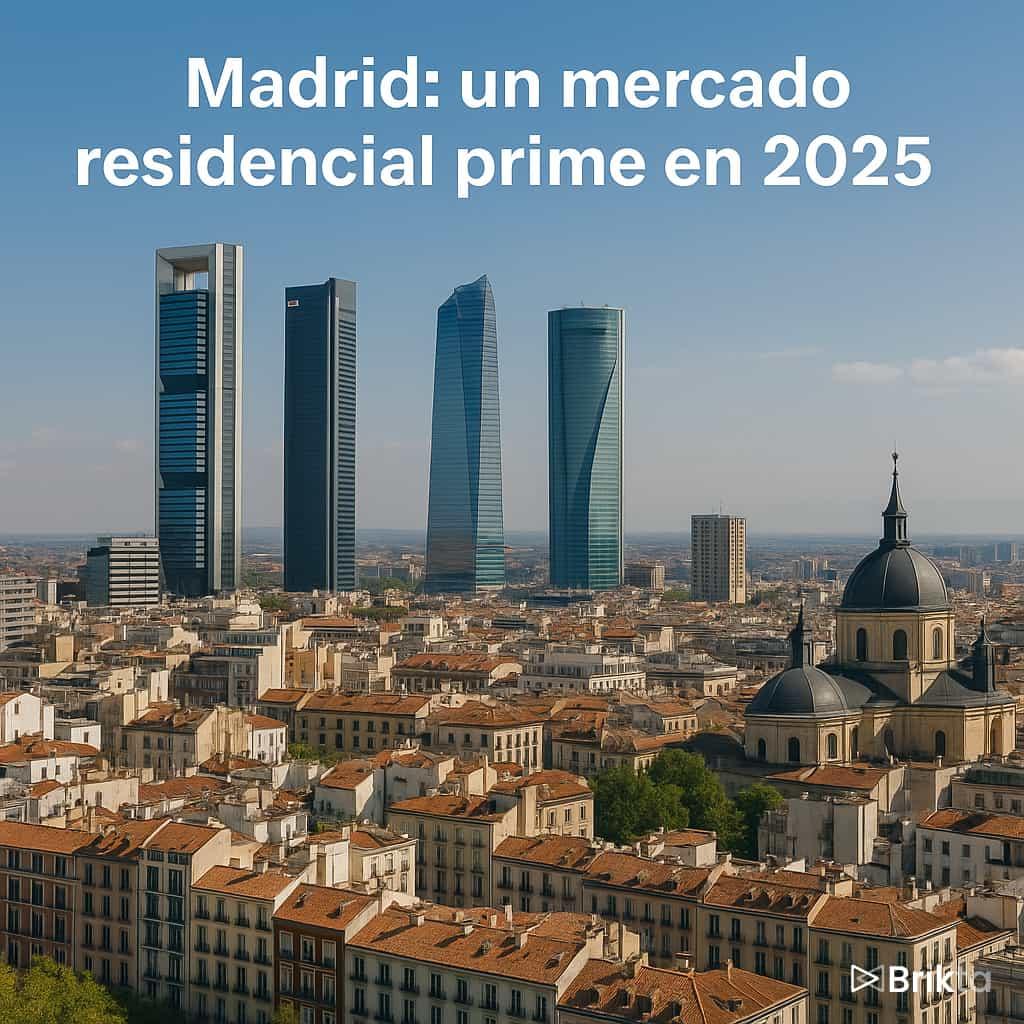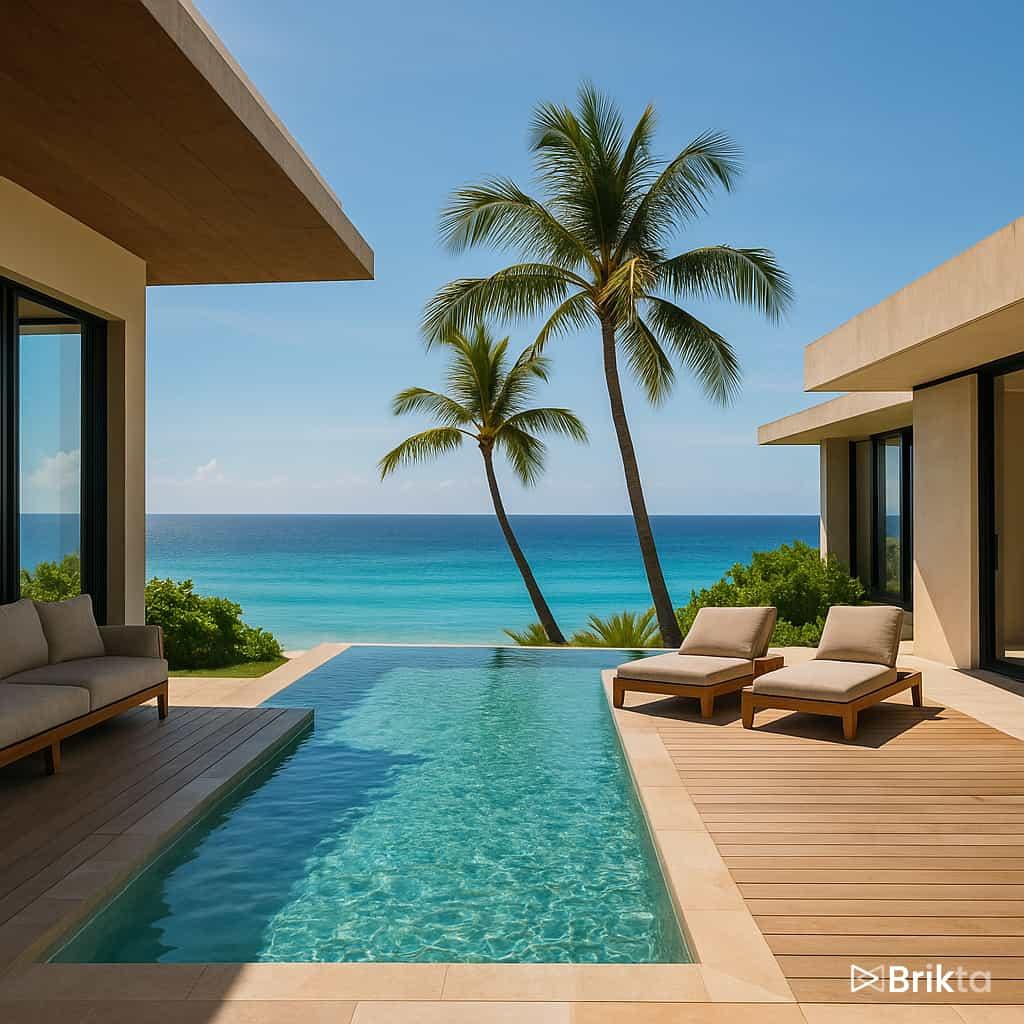Fractional Investment in Luxury Properties
Fractional Investment in Luxury Oceanfront Properties: Profitability and Opportunities for 2025
Contents
- What is fractional investment?
- Advantages over full ownership
- 2025 market trends
- How to estimate ROI step-by-step
- Recommended destinations
- Common mistakes to avoid
- Strategies to maximize profitability
- Frequently Asked Questions
What is fractional investment?
Fractional investment allows you to acquire a real ownership percentage (not just “usage time”) of a luxury residence — for example, an oceanfront villa — sharing rights and obligations with other co-owners. The typical structure includes a legal vehicle (trust, corporation, or condominium) and clear rules for usage, maintenance, resale, and management.
Common co-owner rights
- Participation in capital appreciation when selling the fraction or the entire asset.
- Potential rental income when the property is not in use.
- Usage calendar balanced and transferable according to project rules.
- Transfer or sale of the fraction as per the agreement.
Typical responsibilities
- Contributions for maintenance and reserve fund.
- Compliance with regulations (occupancy, guests, damages, etc.).
- Adherence to resale policies and right of first refusal if applicable.
Advantages over full ownership
- Lower entry ticket: access USD 1M+ inventory with just a fraction of the capital.
- Geographic diversification: spread your investment across Riviera Maya, Madrid, or the Caribbean.
- Professional management: hospitality standards and optimized yield by specialized operators.
- Relative liquidity: possibility of reselling the fraction (subject to project rules and demand).
2025 market trends
The prime and luxury segment remains resilient with moderate growth projections in capital values and international demand. European cities like Madrid maintain outstanding performance, while established beach destinations in Mexico sustain high hotel occupancy rates that support premium vacation rental demand in luxury residential inventory.

- Europe: Prime growth forecasts focusing on cities like Madrid, Lisbon, and Barcelona, driven by international demand and limited supply.
- Mexico (Caribbean): high occupancy levels in Riviera Maya and tourist hubs like Cozumel reinforce the case for premium beachfront rental yields.
- Caribbean (DR): tourism incentive frameworks drive new developments and foreign investment in tourist zones.
How to estimate ROI step-by-step
Total returns combine the property’s capital appreciation and net rental income after expenses. Before deciding, build a simple model with conservative assumptions.
1) Key variables
- Asset price: total property value (e.g., USD 1,200,000).
- Fractions: number of parts into which it is divided (e.g., 8, 12, or 16).
- Expected occupancy: % of nights rented per year (use local benchmarks).
- Average daily rate (ADR): reference from comparable properties.
- Costs: operations, management, maintenance, insurance, capital reserve.
- Taxes: local income/VAT taxes and tourism levies where applicable.
2) Useful formulas
Gross annual income ≈ Occupancy (%) × 365 × ADR Net annual income ≈ Gross income − (operating costs + maintenance + management + taxes) Rental ROI (%) ≈ (Net annual income / Investment in the fraction) × 100 Total return ≈ Rental ROI + capital appreciation (annual average)
3) Red flags
- Projections not supported by local data on occupancy/ADR.
- Contracts unclear on exit (resale, right of first refusal, commissions).
- Underestimating maintenance and capex expenses (equipment, replacements).
Recommended destinations
1) Riviera Maya (Mexico)
One of the most solid tourist corridors in the hemisphere. High international air traffic, a variety of experiences (from wellness to gastronomy), and a broad demand base for short- and medium-term stays. Submarkets like Playacar, Tulum, and Akumal lead occupancy and rates in luxury hospitality and accommodations, boosting the rental yield of well-managed vacation residences.
2) Madrid (Spain)
Prime market with sustained international demand, limited supply in central neighborhoods, and moderate short-term growth prospects. The city’s strength as a cultural and business hub supports high-end rental absorption and luxury housing investment, with professional management for temporary stays where allowed by regulations.
3) Punta Cana / Bávaro (Dominican Republic)
Tourist developments with consolidated infrastructure and tax incentives for approved projects. The year-round “sun and beach” appeal, combined with air connectivity and an expanding hospitality ecosystem, attracts investors seeking competitive tickets in the Caribbean.
Common mistakes to avoid
- Confusing fractional co-ownership with traditional timeshare.
- Not auditing operators and their track record on occupancy/ADR.
- Ignoring commissions and penalties for reselling the fraction.
- Not budgeting capex for premium furniture/equipment.
- Projections with above-market occupancy rates or pricing.
Strategies to maximize profitability
- Diversification: combine beach (Riviera Maya) with a European capital (Madrid) to balance seasonality.
- Calendar management: prioritize high-demand weeks and rent the rest with a revenue management strategy.
- Exchange programs: use partner destination networks to optimize usage/income.
- Contract transparency: define exit, management fees, and right of first refusal before investing.
Want a custom financial model?
At Brikta, we build projections with local data (occupancy, ADR, costs) and conservative scenarios.
Frequently Asked Questions
How is it different from a timeshare?
In fractional investment, you acquire ownership (a fraction of the title or the legal vehicle), participate in capital appreciation, and can resell the fraction. In a timeshare, you usually only purchase the right to use for certain periods.
Can I resell my fraction?
Yes, subject to the agreement. Review listing processes, commissions, and right of first refusal for other co-owners.
How do taxes apply?
It depends on the country and the project’s regime (VAT/income tax in Mexico, IRPF/ITP in Spain, tourism incentives in the Caribbean). Consult your tax advisor.
What is a reasonable return?
It varies by destination, operator, and market cycle. Use conservative assumptions and base occupancy/ADR on actual local market data.
© 2025 Brikta. This content is for informational purposes only and does not constitute financial, legal, or tax advice.
News insight
 Aug. 18, 2025
Aug. 18, 2025
Invest in San Miguel de Allende 2025
Discover how to invest in San Miguel de Allende: market 2025, ROI, rents, key neighborhoods and tips...
 Aug. 13, 2025
Aug. 13, 2025
How to take advantage of current luxury trends
Luxury real estate investment continues to be one of the most solid assets to diversify a portfolio,...

